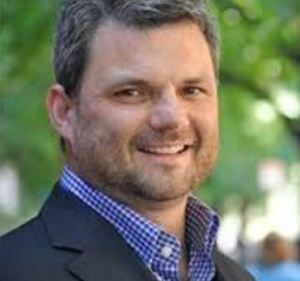Meet our experts: Kevin P. Gallagher
 Dr. Kevin P. Gallagher is a Professor of Global Development Policy at the Frederick S. Pardee School of Global Studies at Boston University, where he also serves as the Director of the Boston University Global Development Policy Center (GDP Center). The GDP Center is dedicated to conducting policy-relevant research aimed at promoting financial stability, human well-being, and environmental sustainability worldwide.
Dr. Kevin P. Gallagher is a Professor of Global Development Policy at the Frederick S. Pardee School of Global Studies at Boston University, where he also serves as the Director of the Boston University Global Development Policy Center (GDP Center). The GDP Center is dedicated to conducting policy-relevant research aimed at promoting financial stability, human well-being, and environmental sustainability worldwide.
Currently, Dr. Gallagher is the Lead Expert on Multilateral Development Bank Reform for the Brazilian Presidency of the G20. He is also a member of the Task Force on Climate, Development, and the International Monetary Fund, a group of experts focused on advancing development-centered climate policy at the IMF through rigorous empirical research. Additionally, he co-chairs the Debt Relief for a Green and Inclusive Recovery Project.
He is the author or co-author of seven books, his latest ‘The Case for New Bretton Woods‘ was coauthored with Richard Kozul-Wright. Other publications include The China Triangle: Latin America’s China Boom and the Fate of the Washington Consensus.
Previously, he served as co-chair for the T20 India Task Force on ‘Refueling Growth: Clean Energy and Green Transition’ under the Indian Presidency of the G20. Additionally, he was a member of the Chair’s Council of the United States Export-Import Bank on China Competition and acted as the International Chair for the ‘Greening the BRI Task Force’ within the China Council for International Cooperation on Environment and Development (CCICED).
Italy Task Force on International Finance and the United Nations Committee for Development Policy. He participated in the US Department of State’s Investment Subcommittee of the Advisory Committee on International Economic Policy and served on the National Advisory Council on trade policy at the US Environmental Protection Agency. His academic roles have included Visiting or Adjunct Professor positions at the Paul Nitze School of Advanced International Studies at Johns Hopkins University, the Fletcher School of Law and Diplomacy at Tufts University, El Colegio de Mexico in Mexico, Tsinghua University in China, and the Center for State and Society in Argentina.
Professor Gallagher’s expertise encompasses economic development, trade and investment policy, international environmental policy, and Latin American affairs.
What are some of the biggest challenges and opportunities that you see in achieving these sustainable development goals globally, particularly in light of the recent geopolitical and economic shifts that’s happening in the world?
I believe that 2023 was a watershed year because, at the G20, the Indians introduced the International Experts Group on Development Finance (IEG), which produced a report called the Triple Agenda. This report was signed and approved by all G20 countries. The first significant outcome was the agreement on the scale of finance needed. According to the report, emerging market and developing countries (excluding China, which can manage on its own) need to mobilize $3 trillion annually to meet the SDGs and climate goals by 2030. Of this amount, $2 trillion should come from domestic sources, such as taxes and other internal revenues, while $1 trillion should come from international sources like JPMorgan and the World Bank.
This agreement has set the right scale and division of labor. Of the $1 trillion from international sources, $500 billion needs to come from public sources, including new capital for the World Bank and increased aid from organizations like USAID. There is a detailed agenda on how to achieve this $500 billion target, and a major discussion on this will take place at the next COP, which I believe is in Azerbaijan. Here, they will determine the new pledge amount from the UN, which will likely be between $100 billion and $500 billion. The remaining $500 billion is expected to come from the private sector, which is where your expertise is crucial.
To continue on an optimistic note, if we can secure $500 billion in public finance, it can play a significant role in de-risking and paving the way for international investment. This investment, which is typically risk-averse, could then be directed towards projects like building power plants in South Africa or Malawi, supported by guarantees from the World Bank and investments in technological logistics. Public finance could essentially create the pipeline for innovative green and SDG finance moving forward.
Looking ahead to 2024, I am even more hopeful because of Brazil’s role. Brazil, as a democratic country committed to multilateralism, stands as a beacon of hope in an era where support for multilateralism is waning.
What are some of the biggest challenges and opportunities that you see in achieving these sustainable development goals globally, particularly in light of the recent geopolitical and economic shifts that’s happening in the world?
We recognize that the private sector, for rational reasons, may be reluctant to participate, but they need to be part of the solution. To involve them more, we need increased public investment to reduce risks. This approach is moving in the right direction. However, there are three significant challenges.
First, the absorptive capacity of most emerging markets and developing countries to handle foreign currency debt is limited. Many of these countries are at or near debt distress. According to the UN and the IMF, around 62 countries require substantial debt reduction, as they cannot take on additional debt. Furthermore, there are about 100 other countries where the yields on their bonds exceed their projected economic growth rates through 2030. Ideally, the growth rate of an economy (g) should be higher than the weighted average cost of capital on all foreign debt (r). This is not currently the case.
Recently, the financial press has highlighted that some developing countries, like Côte d’Ivoire, Benin, and Romania, are returning to the markets, with Kenya possibly following suit. However, the lowest interest rate among these was 8.6%, which is concerning. This situation reflects the structural issues in global finance, not merely the actions of capitalists. The disparity between the Federal Reserve’s rates and the risk premiums in developing countries makes borrowing almost inaccessible. Some countries are taking significant risks by borrowing at high rates.
One major challenge is developing a debt reduction program for the 62 countries that are unable to borrow until 2030. Although these countries might not cause a global financial crisis, the impact on smaller nations, like Suriname, could be devastating, leading to a lost decade for their populations and economies. Addressing this issue is crucial.
Secondly, for the remaining countries, the focus should be on reducing the cost of capital. This is where public finance mobilization plays a crucial role. Public funds can provide credit enhancements, making it easier for private capital to participate. This combined effort is essential for fostering sustainable development and meeting global financial needs.
